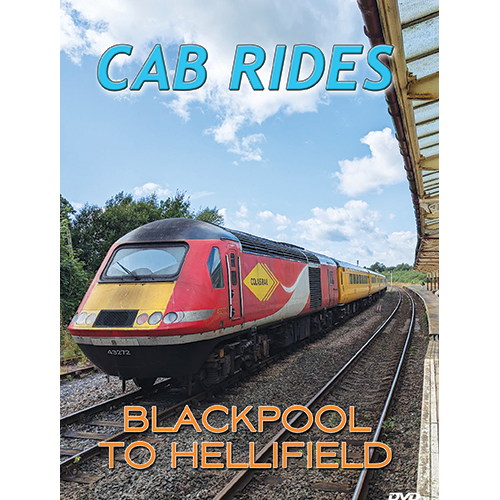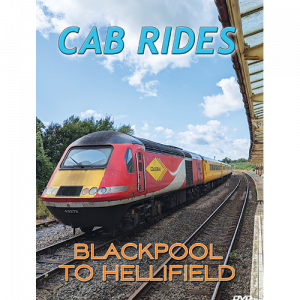This Cab Ride sees us travel in a class 43 HST from Blackpool North to Hellifield on the Midland Railway’s Bentham Line, by way of Preston and Blackburn. It’s a spectacularly beautiful day which shows the landscape at its best, from the flat lands of the Fylde Peninsula to the rolling hillsides of the upper Ribble valley.
We begin from platform 2 at Blackpool North on what was a branch of the Preston & Wyre Railway’s line to the port of Fleetwood. On the way we see regular services heading towards Blackpool operated by class 331s, introduced after the line was electrified in 2018. We meet the link from Blackpool South at Wesham, and join the West Coast Main Line at Preston Fylde Junction. There’s a brief wait at Preston station to onboard crew, before we head a short distance south on the up slow to Farington Curve Junction, where we turn towards Blackburn on the East Lancashire railway’s line.
After passing through the short Blackburn tunnel, we turn north at Daisyfield Junction to head for Clitheroe. The original intention had been to build all the way to Hellifield, but it was only when the Midland Railway opened the Settle & Carlisle line in 1875 that it became financially attractive. The route was mothballed by British Rail in 1962 and remained unused for 32 years.
The landscape becomes challenging as we continue up the Ribble Valley, and there are sections as steep as 1:68 around Langho. It’s not an overly fast section of line, but it gives us time to appreciate the beautiful scenery, and our arrival at Hellifield displays that station’s lost heritage, with long platforms and impressive restored canopy.
Our class 43 is pulling Network Rail’s Plain Line Pattern Recognition Train, which monitors the state of the track using high tech sensors, searching for any areas of concern.
There’s full commentary along the way, but you can also choose to turn it off and concentrate on the sound of the journey alone. On-screen graphics display permissive speed, temporary speed restrictions, signal aspects and station names, and there’s an animated map which shows us where we’re going.





